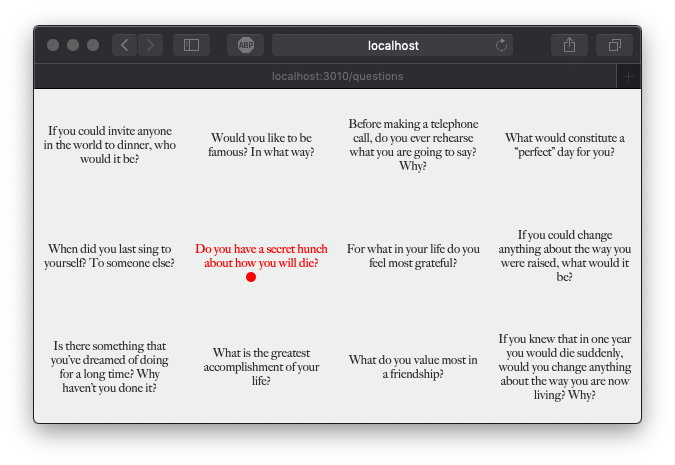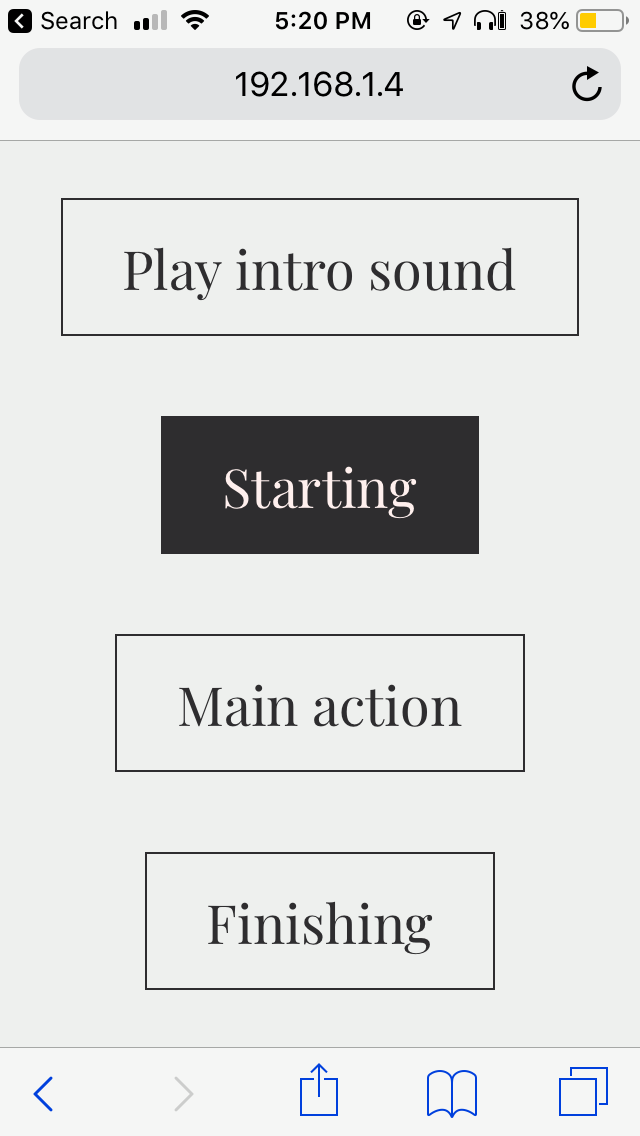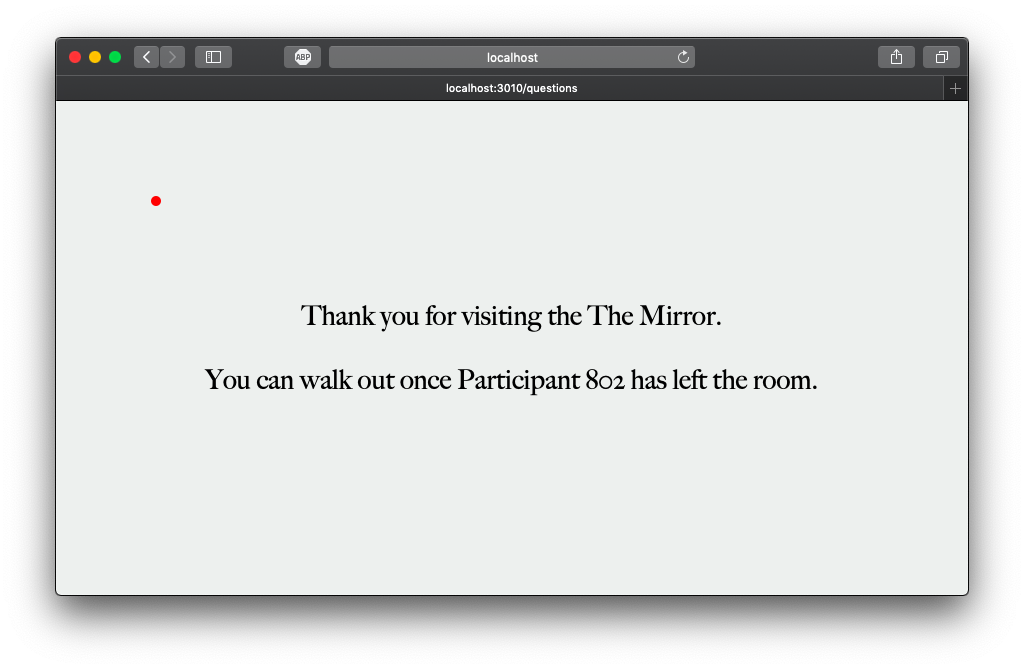
The Mirror Room is an installation built in collaboration with Rachel and Shuyi in response to The Nether—a sci-fi play talking about avatars, emotional attachment and pedophillia (yes, it’s complicated…).
Concept
Set in a near future in which the internet has become more immersive, the play approaches a number of dualities pertaining to a human existence split between a physical world and a digital one. Our group chose to focus on the interrogation room scenes, happening between Detective Morris and Sims, while also approaching the interactions happening within The Hideaway, an online space where anonymous adults with child avatars fulfill the fantasies of other anonymous adults with adult avatars. We wanted to create an environment similar to the interrogation room, limit access to the installation to two people concurrently, and funnel the communication between the two through a digital layer as a way of introducing a wall of anonimity between them. While the two participants would be sitting a few feet away from each other, they would not see each other’s faces, and their communication would happen through screens, mice, keyboards and text-to-speech software.
The main object we worked with for the installation is the mirror. Mirrors made sense for two reasons: first, the room we were installing in had glass walls, so everything felt exposed and too transparent. We wanted to amplify this effect, since we were going for a sterile, interview-room aesthetic. Second, the mirror made sense conceptually in the context of online avatars and fulfilling forbidden desires—the online search for anonymous love, especially in a provider / consumer context, is an inherently selfish act.
The mirror idea came into the conversation early on, and over the course of the week we discussed how we could create a compelling experience using the mirrors, and tie them conceptually to avatars. I think as a team we were good at getting materials and prototyping early on (maybe not early enough though? see cube size issue below…), as well as spending time in the assigned space and trying ideas out as soon as we had them. I think we were also good at generating ideas for interactions inside the installation. What I wish we had done a better job at is staying aligned conceptually: taking a step back every now and then, and asking ourselves the high level questions (Is X still what we want people experiencing this installation to feel?, Why interaction X over interaction Y?, etc.) I also wish we could have put more thought into altering the space more significantly, but I’m blaming the short time for this one.


Environment
We ended up hanging a mirror cube from the ceiling. Throughout the course of the entire experience, one of the two participants would be sitting in a chair while having their head covered by the cube. The second participant would also be sitting, facing the first participant’s body and their mirror head, with a laptop in front of them. Participant #1 asks Participant #2 questions from a list, using a mouse. Participant #2 hears text-to-speech synthesized readings of the questions and sees them on their screen, and answers by typing on their laptop. While the interaction is happening, an ambiental smooth jazz track is playing through the speakers, in an attempt to create a comfortable setting for the two.
We ran into a few difficulties while installing and testing this setup, which could have probably been avoided through better planning. Hanging a cube from the ceiling proved to be a more difficult (or at least much slower) task than we had expected, which led to us not having enough time to hang 5 other surface mirrors from the ceiling, as we were planning. We wanted to create the experience of being lost in a handful of images of themselves for Participant #2, but didn’t manage to achieve that.
The mirror cube’s size was 12in. x 12in. x 12in., a decision largely constrained by materials—we found plastic mirror sheets of that size (and wanted to avoid hanging glass mirrors from the ceiling because of their weight.) However, the cube had a small screen inside (smartphone size), and the person sitting inside needed to see the screen. Due to the small size of the cube, this part of the experience was uncomfortable and needs to be reworked.



Software
We used four networked devices: a smartphone inside of the cube which Participant #1 would use to ask Participant #2 questions from a list, a laptop which Participant #2 would use to receive the questions and type answers, a second laptop which we used in order to allow Participant #1 to control the smartphone using a computer mouse, and a second smartphone which we used outside of the installation in order to control the progression of events in the room (playing a voiceover of the instructions once both participants are in, showing the list of questions or ending the experience.)

While there were no major difficulties in developing the software, Friday’s playtest session brought a few challenges: the smartphone screen going black after a certain amount of idle time, the networked communication not working for the first pair which tried the installation, or us having to listen closely and observe the room when controlling the experience from outside, because certain triggers had not been implemented. These are all technical challenges which could have been avoided with some more testing before showing the work, we were definitely rushed. The main learning here is to plan the install better next time, such that there is time for at least one full run-through before the show starts.
This installation made for a busy week, but I’m happy with how it turned out. It’s ultimately a prototype for the idea of having two people share a physical space, and be led into having an intimate encounter exclusively digitally. The main question I want to ask participants is whether it made them willing to share more than they would have if they had been in the same room with a (semi-)stranger without the technological barriers we imposed. If yes, why and how?
